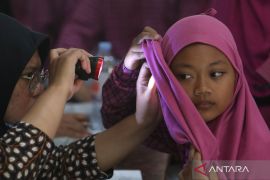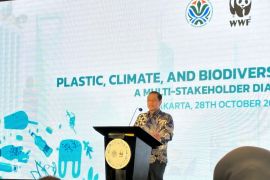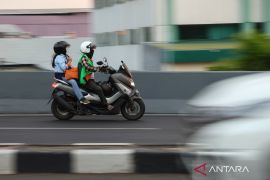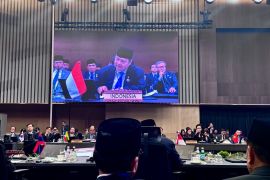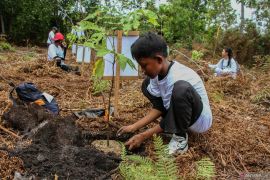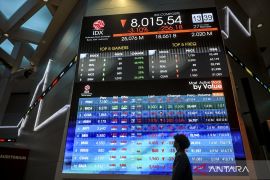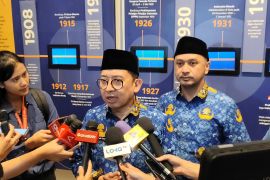However, so far, the government still has to import the commodity to meet about 50 percent of its people`s need, particularly sugar for industry.
The problem that the country`s sugar business is facing is the inefficiency of most of its sugar mills. Additionally, the sucrose content of the country`s sugarcane and the competitiveness of its sugar production are both low.
White sugar production by the country`s sugar mills is only about 2.7 to 3 million tons per annum or only about 50 percent of the need at about 5 to 6 million tons. Thus, the balance should be covered by imports.
The production of the sugar factories was affected partly due to the condition of the old mills. Hence, the Ministry of State-owned Enterprises (SOE) announced last year that it was planning, beginning in 2018, to shut down 23 of the 45 sugar mills in Java in stages by 2020.
According to the Center for Indonesian Policy Studies (CIPS), the national sugar mills should increase the competitiveness of sugarcane farmers? production by increasing the sucrose content of their canes.
Chief researcher of CIPS, Hizkia Respatiadi, noted in a written statement last month (Oct 20) that until mid 2018, the extraction level of sucrose content of Indonesia`s sugarcane was only about 7.5 percent.
This level is below those of the Philippines and Thailand which reached 9.20 percent and 10.70 percent, respectively. If Indonesia, the Philippines, and Thailand produce the same quantity of sugar, then Indonesia needs to harvest sugar 22.67 percent higher than that of the Philippines and 42.67 percent higher than that of Thailand.
"As an example, if Indonesia, the Philippines, and Thailand intend to produce 1 million tons of sugar, then Indonesia should harvest 13.3 million tons of sugarcane, while the Philippines and Thailand only need 10.8 million tons and 9.3 million tons, respectively," Respatiadi noted.
Increasing the sucrose content of the sugarcane can be done through the efficiency of the sugar factory. For this reason, real efforts are needed to revitalize sugar factories in Indonesia.
Sugar factories in Indonesia are generally hundreds of years old because they have been operating since the Dutch occupation in Indonesia. In addition, farmers also need the availability of good quality seeds and fertilizers.
The increase in sucrose content of sugarcane is needed to boost the competitiveness of farmers` sugar. Even though the price for the absorption of farmers` sugar by the state-logistics agency (Bulog) has been set at Rp9.7 thousand per kilogram, the low sucrose content is thought to be the main cause for the difficulty of farmers to sell their products.
If Bulog does not want to buy farmers` sugar, then it is feared that commercial industries also do not want to buy it. Nevertheless, Respatiadi also suggested that there may be other factors that cause local production of farmers not to be absorbed.
"We need to look at this problem from the business perspective. Another possibility on why farmers cannot sell their sugarcane crops is because there are currently a lot of sugar stocks in the market. Hence, sugar mills think they do not need to supply the market with sugar again and so they refuse to buy farmers` sugarcane. Therefore, Bulog cannot buy sugar from sugar factories," he explained.
However, this could only be realized if Indonesian sugar prices were low, he added. The average price of national white crystal sugar in August 2018 reached Rp12,386 per kilogram, which was almost three times the world price of Rp4,591.48 per kilogram in the same period.
In the meantime, the Association of the Indonesian Sugar Cane Farmers (APTRI) stated that virtually Bulog has absorbed farmers` sugarcane crops. APTRI executive officer Sunardi Edy Sukamto remarked in a release last month that APTRI has agreed to the selling price to Bulog and is consistent with the policies that have been taken.
He explained that currently most of the farmers` sugar cane has been cut down and farmers` sugar has been bought by Bulog on assignments from the government. Sukamto explained that the farmers` sugar had been partially absorbed by traders before the assignment of Bulog.
"We understand that even though it is tough, Bulog continues to carry out its commitment; yet in the process, there are payments that are not smooth, because there may be an administrative process and the amount of funds available at Bulog. Moreover, the amount is not small, around Rp1.2 trillion," he added.
However, he continued, it was not right when the sugar had been purchased, but there were those who wanted the price to be raised.
"When the farmers have been billing, when the sugar has been bought by Bulog, when the producers have sold them to the traders, when sugar is in the hands of the traders, and there is a rally asking for the price to be raised, then those who will enjoy the benefits are not farmers," he revealed.
He explained that sugar from farmers under the non-state-owned or private sugar companies had also been absorbed by traders, and thus sugar is under the control of traders.
Reporter: Andi Abdussalam
Editor: Yosep Hariyadi
Copyright © ANTARA 2018




